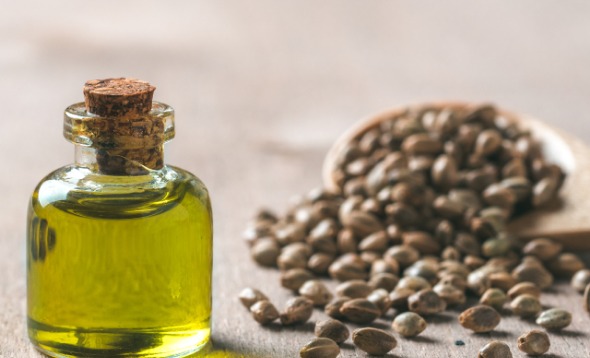That organic living is a conscious health choice
Hemp - Why cant I find it and what are the alternatives
With the global shift toward plant-based diets and the prevalence of nut-allergies, seeds have moved centre stage seemingly overnight. While comparisons between seeds abound in blogs, health stores and social media feeds, no seed has set itself apart or stirred so much debate as hemp.
For its unique constellation of beneficial nutrients, ihemp is valued and much sought-after as a nutraceutical “Super Seed” alongside chia and flax. As such, hemp is sold as a dietary supplement of sorts - in whole, oil, or ground form. It’s also used as a plant-based milk, a protein supplements, and an ingredient in breads, cereals, energy bars and other specialty health products.
However, unlike its peers, hemp has a more controversial upbringing. It’s derived from the same plant – Cannabis sativa L– from which marijuana is made. Yet, you won’t score a high as hemp and marijuana are from two different parts of the plant. Hemp refers to the edible mature seed. Tetrahydrocannabinol (THC), the compound responsible for marijuana’s psychoactive effects, resides in the sticky resin in the immature flowering female plant. There are only trace amounts of THC in commercial hemp products - not enough to alter any consumer’s state of consciousness – nevertheless, many countries – Singapore included – prohibit the sale of hemp products for this reason.
So what health perks does hemp provide and what foods can stand in as suitable (and legal) alternatives? Here’s what you need to know:
OILS
Hemp oils are praised for their perfect fatty acid profile. The human body relies upon fatty acids to carry out its many physiological functions. Those deemed “essential” are ones that must be obtained from food intake. The body is unable to produce Essential Fatty Acids (EFAs) and will become deficient if the diet is lacking. Of the EFAs, omega 6s and omega 3s receive the most attention. When consumed, omega 6s tend to promote inflammation, while omega 3s help to reduce it. For overall health and disease prevention, research suggests that it’s best to consume these in a ratio of 3:1 (omega 6: omega 3). As nature would have it, hemp has both of these EFAs in this precise ratio. Hemp supports you in maintaining this balance if your regular food choices are already offering omega 3 and omega 6 fats in this proportion. Sadly, this is not the case for the majority of the population worldwide. The ordinary intakes of the average person range from 6:1 to 20:1 (omega 6: omega 3), which is far from the 3:1 goal. So, it is best to consume foods that contain more omega 3s. Which foods would better boost your EFA balance?
- Sustainably-sourced wild-caught cold-water fish — Fish such as salmon, cod, tuna, mackerel and sardines offer the highest amounts of the omega 3 fatty EPA and DHA (the most potent and anti-inflammatory)
- Chia and flax seeds or oil - For plant-based individuals, these seeds offer three to four times less of the pro-inflammatory omega 6s and more than double the anti-inflammatory omega 3s.
Of note, hemp seed oil is also a less-common source of Gamma Linolenic Acid (GLA). GLA is believed to be exceptional — an anti-inflammatory member of the otherwise pro-inflammatory omega 6 fatty acids. Healthcare practitioners aren’t in agreement that consumers should seek out sources and supplement with GLA, but GLA products are often suggested to alleviate conditions such as premenstrual syndrome eczema and arthritis. GLA is also used aesthetically for stronger hair, skin and nails. In the absence of hemp, other foods that offer GLA include oats, barley and spirulina. GLA supplements from evening primrose, borage and blackcurrant oils are also available.
PROTEIN
Amongst the seeds, hemp takes first prize for protein — outweighing chia and flax by anywhere from 30-70 %. Some consider hemp a “complete” protein, meaning it contains all of the “essential” amino acids — the protein building blocks that (again, like the fatty acids) must come from the diet. However, other plant-based proteins outshine hemp by a long shot. Per serving, pea and soy proteins offer more total protein and more essential amino acids. Pea protein is also believed to be more readily digestible.
FIBRE
It’s often mentioned that hemp seeds are a source of fibre. However side-by-side and gram-for-gram, hemp has far fewer bragging rights than flax or chia. In the ground form, hemp offers only 0.3 grams of fiber per tablespoon. Flax offers 3 grams (ten times more) and chia offers 5 grams (nearly 17 times more).


























_1672804154.jpg)

_1611290459.jpg)